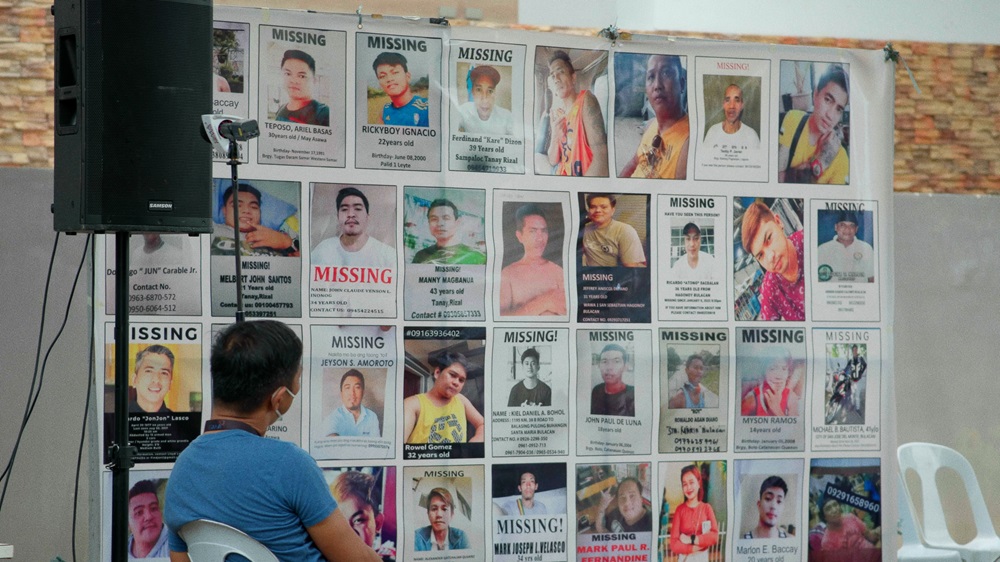For years, the disappearance of dozens of sabungeros—cockfight enthusiasts—haunted the nation. Despite numerous reports and investigations, no charges were filed. Now, shocking revelations expose 22 key reasons behind the stalled case, revealing a web of corruption, intimidation, and systemic failure.

1. Whistleblower Comes Forward
A suspect known as “Totoy” (Julie Patidongan) finally spoke up in June 2025, accusing businessman Charlie “Atong” Ang of orchestrating the abductions and killings tied to cheating in e-sabong—claims corroborated by insider farm staff.
2. Police Complicity and Cover-Up
Fifteen police officers, some reportedly on private business payrolls, are now under restrictive custody, once their involvement was confirmed during the DOJ-initiated review.
3. Interference at the Highest Levels
Latest reports show the Supreme Court has launched probes into alleged judge-fixing intended to derail legal proceedings.
4. Alleged “Corporate Killings”
Justice Secretary Remulla described the abductions as “corporate killings,” citing organized group structures—Alpha, Bravo, Charlie, Delta—within the e-sabong network.
5. Bodies Hidden in Plain Sight
New intelligence suggests multiple disposal methods, including secret burial in leased fishponds and submerged sites in Taal Lake. No prior investigation ever reached these locations until now.

Why Nothing Moved Before
Fear of retaliation from powerful gambling operators and their political backers.
Low public pressure initially; these were “just sabungeros.”
Bribery, threats, and legal intimidation silenced whistleblowers.
Slow bureaucratic inertia in DOJ, NBI, and PNP.
Intense legal maneuvering, including bail petitions and injunctions.
Judges allegedly tampered with or coerced.
Prior cases stalled due to lack of bodies and forensic evidence.
Whistleblowers required physical evidence before speaking out.
Courts focused on kidnapping charges while omission of murder counts prevented progress.
Lack of coordination across agencies.
Shift in political priorities overshadowed the case.
Limited media coverage kept public attention diverted.
COVID lockdowns hindered investigative work.
Funding gaps delayed proper forensic dives.
Jurisdictional issues over Taal Lake and fishpond leases.
Fear among relatives of sabungeros to go public.
Witness protection programs inadequate.
Corruption within local prosecutor offices.
International human rights law complications.
Legal loopholes around e-sabong operations.
Political lobbying from e-sabong lobbyists.
Senior police officers allegedly protected perpetrators.
What Happens Next
DOJ is preparing criminal, kidnapping, murder, and international humanitarian law charges—expected this week.
PNP, NBI, and DOST will jointly examine ground-zero fishpond sites and map Taal Lake disposal locations .
Supreme Court investigations into judge-fixing will determine if legal processes were compromised .
Final Take
This revelation of 22 reasons unveils why a deeply sinister saga remained unresolved for so long. The dead still await justice; politicians, police, and businessmen may soon stand trial. These revelations lift a veil on institutional rot—but for many families, the real question remains: Will the bones buried in Taal Lake finally tell the truth?
News
GULAT ANG LAHAT! Toby Tiangco, Huli sa Video na Nagtatangkang Harangin ang Suspensyon ni Kiko Barzaga – ‘Trojan Horse’ sa Kongreso Nabunyag?
Sa isang mainit na tagpo sa loob ng Batasang Pambansa na tila hinugot sa isang pelikula, isang hindi inaasahang “plot…
HINDI NA NAKAPALAG! Kiko Barzaga, Pinatayan ng Mikropono at Sinuspendi ng 60 Araw Matapos ang Matinding Harapan sa Kongreso Dahil sa ‘Fake News’
Sa isang mainit at dramatikong tagpo sa loob ng Batasang Pambansa, tuluyan nang ibinaba ang kamay na bakal laban…
GUARD! KALADKARIN NIYO PALABAS ANG MATANDANG ‘YAN! ANG BAHO NIYA, NAKAKAHIYA SA MGA PASYENTE KO!
Napakalakas ng bagyo nang gabing iyon sa lungsod. Ang hangin ay humahagupit sa mga bintana ng St. Luke’s Medical City…
LUMAYAS KA RITO! ANG BAHO MO! WALA KANG PAMBAYAD KAYA WALA KANG KARAPATANG MAGPAGAMOT DITO!
Sa gitna ng abalang lungsod ng Makati, nakatayo ang St. Raphael Medical Center, isang ospital na kilala sa makabagong kagamitan,…
The Uncomfortable Truth Exposed: Why the World’s Wealthiest Nations Are Reportedly Laughing at the Philippines and the Shocking Reason Behind Their Sudden Loss of Respect for the Pearl of the Orient!
It is a bitter pill to swallow for every patriotic Filipino, but a disturbing narrative is quietly circulating within the…
ARGUS Touches Hearts on Showtime as He Emotionally Bids Farewell to His Father
Manila, Philippines — It was a tear-filled episode of It’s Showtime as young singing sensation Argus delivered one of the most emotional…
End of content
No more pages to load












